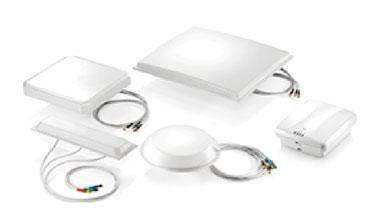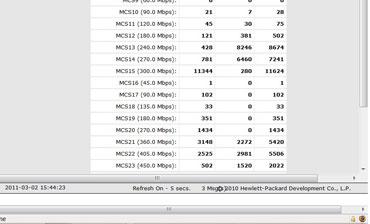Review: HP's New Access Points Ramp Up Data Delivery

Hewlett-Packard this week raised the bar on WiFi communication capabilities with the release of the HP Mobile Access Solution, a trio of dual-radio, wireless Ethernet access points, two of which generate three data streams per radio, an industry first, according to HP. The two high-end devices also can reportedly support as many as 15 high-speed simultaneous wireless sessions -- 50 percent more than what's currently available -- and offer an aggregate throughput of nearly one gigabit per second.
At the entry level is the $699 E-MSM430, a more conventional unit that HP says will compete directly with the Aruba AP-105 and Cisco Aironet 1042 access points. Up the ladder are the E-MSM460 and E-MSM466, a pair of dual-radio units with each radio capable of three data streams for 900 MBps total theoretical throughput potential.
The 460 includes three built-in antennas and can work on 2.4-GHz and 5-GHz frequencies simultaneously. The 466, with its external antenna connectors, is intended to mount underneath drop ceilings and can attach to indoor or outdoor antennas, and can handle simultaneous 5-GHz connections. The 460 and 466 list for $999. Available now, the Power over Ethernet devices are all 802.11 a/b/g/n WiFi certified and can work autonomously or with existing HP controllers and management tools. Layer 3 roaming enables mobile users to move seamlessly between subnets, and a guest management feature can be set up to provide Internet-only access.
Most notable about HP's new high-end gear is their dual MIMO (multi-in, multi-out) three-stream radios, an industry first that the company claims can boost the communication speeds and range. The CRN Test Center put those claims to the test this week, and found the devices to be extremely promising but far from perfect. Although each of the radios is supposed to support a 450 Mbps data rate, initial tests showed most packets moving through the AP at 270 Mbps. And as one might expect, performance degraded as distance increased between the AP and our test laptop.
Here's how we tested the new HP access points. The Test Center configured the 460 as a simple network bridge between mobile clients and the Internet. Access was left wide open with no client authentication needed to connect. With the MSM's super-easy browser interface, this process took just a few minutes. We used a laptop equipped with an Intel 5300 AGN WiFi chip, which operates in both the 2.4 GHz and 5.0 GHz bands and can transmit up to 450 MBps over three data streams (a 6300 would have worked too). To verify that we were communicating at the 450 MBps rate, we accessed the 460's data rate matrix, which is among the pages in its HTML-based management interface.
Next: Measuring Data Rate

Once we established a baseline for data transfer, we began to move our laptop away from the access point in 25-foot increments. Before measuring the data rate at each new distance, we cleared the packet counters from the previous distance by pressing the "Clear Counters" button at the bottom of the matrix page. To generate a new set of packets, we ran the applet at speedtest.net. Once that test was complete, we recorded the total number of packets sent and received for each data rate.
It would be rare, according to HP, for all packets of a given session to be recorded at the 450-MBps rate. Indeed, that is the target rate for all transmissions, but as dropped packets and resend requests occur due to interference, obstacles or other impediments, the E-MSM APs will begin stepping the data rate down until it stabilizes. So it's normal for packets to be spread across multiple MCS indexes. The modulation and coding scheme (MCS) index refers to the number of spatial streams, modulation, coding rate and data rate values for a given transmission or session.
Far from the ideal environment for wireless transmissions, our tests were designed more to mimic the real world, where obstacles and interference will usually exist. The 460 was mounted about four inches below a dropped ceiling on a vertical wall using the included mounting plate and hardware. Along our course of 150 feet from the AP, we encountered curved hallways, steel doors, other access points and numerous other sources of interference from a multitude of frequencies.
Performance of the 460 reflected those realities. The good news was that transmission rates remained high -- at or above 300 MBps and with many packets above 400MBps -- at all distances less than 75 feet from the AP. While performance in our tests dropped sharply outside of this range, buildings with such obstructions will often deploy access points within 75 feet or less of each other.
The Mobile Access Solution is designed for deployments of between 200 and 2,000 devices, and provides more, faster connections than competitors in the space. Cisco declined our invitation to send a unit for comparison testing. The CRN Test Center recommends the HP Mobile Access Solution for its increased connection capacity, faster throughput and its simple and flexible administration. Although they're just being announced this week, the HP's Mobile Access Solution devices have been in the reseller channel since Feb. 1.